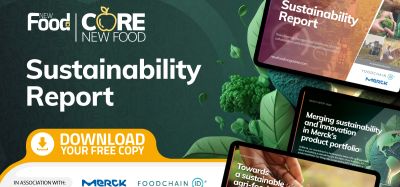Researchers discover “saviour” for threatened rice crops
- Like
- Digg
- Del
- Tumblr
- VKontakte
- Buffer
- Love This
- Odnoklassniki
- Meneame
- Blogger
- Amazon
- Yahoo Mail
- Gmail
- AOL
- Newsvine
- HackerNews
- Evernote
- MySpace
- Mail.ru
- Viadeo
- Line
- Comments
- Yummly
- SMS
- Viber
- Telegram
- Subscribe
- Skype
- Facebook Messenger
- Kakao
- LiveJournal
- Yammer
- Edgar
- Fintel
- Mix
- Instapaper
- Copy Link
Posted: 3 March 2023 | Grace Galler | No comments yet
A gene editing technique has been discovered that researchers say could be a “saviour” for rice crops threatened by climate change.


Researchers have carried out a review of gene editing techniques and have found that the CRISPR/Cas (clustered regularly interspaced short palindromic repeats/Cas) method could act as a ‘saviour’ for rice crops threatened by climate change.
The study noted that while rice is one of the “most consumed cereals worldwide and feeds about three billion people”, climate-induced abiotic and biotic stresses have taken their toll on the crop and have affected the production and quality of rice crops.
Highlighting the findings of the study, Dr Antonio Costa de Oliveira, Lead Author of the Federal University of Pelotas, Brazil, alongside a team of fellow scientists, said that the CRISPR/Cas tool was “efficient” in gene editing in studies related to yield, tolerance to biotic and abiotic stresses and rice grain quality.
However, they have noted that the impact of using the CRISPR/Cas approach in breeding programmes depends upon the cultivation of the edited plants on a large scale in the field.
“The development of new, higher yielding cultivars is necessary to ensure global food security,” said Dr Costa de Oliveira.
“Although great progress has already been achieved by conventional breeding, biotechnological tools, such as transgenics and genome editing, can aid in meeting future demands.”
Although they are various gene editing techniques, Dr Costa de Oliveira said that CRISPR/Cas has been proposed because of its “ease of manipulation”.
“Variants such as multiple Cas proteins, base editing and prime editing, which aim to increase editing efficiency have also been proposed. Edited plants are also more accepted because they are transgene free,” continued Dr Costa de Oliveira.
The study highlighted that a 50 percent increase in the current consumption of rice is projected for 2050, in turn generating a demand as high as 1.125 billion tonnes.
Citing the occurrence of biotic stresses (diseases – viruses, bacteria, fungi, nematodes, pests and weeds) coupled with abiotic stresses (drought, submergence, salinity, heat, cold and heavy metals) as a limiting factor for rice production, the researchers also said that climate change impacts the process,
“Climate change influences the frequency, intensity and duration of these stresses,” explained the scientists. “Therefore, it is necessary to develop new rice cultivars with tolerance to stress and higher yield potential, since the expansion of the cultivated area is limited.”
“The high potential of CRISPR/Cas9 editing, for instance, has aided in the development of broad-spectrum resistance against bacteria, fungi and viruses by silencing susceptibility genes and the insertion of resistance genes,” added Dr Costa de Oliveira.
“In this sense, CRISPR/Cas9-mediated genome editing has made it possible to introduce mutations in three promoters of the SWEET gene that resulted in rice lines with broad-spectrum resistance to Xanthomonas oryzae pv. Oryzae.”
Looking ahead, the researchers said that even though conventional breeding has been “decisive so far”, there is still a long way to go in order to meet future demands and face the challenges of rice cultivation.
Related topics
Equipment, Food Security, Product Development, Research & development, Sustainability, World Food









